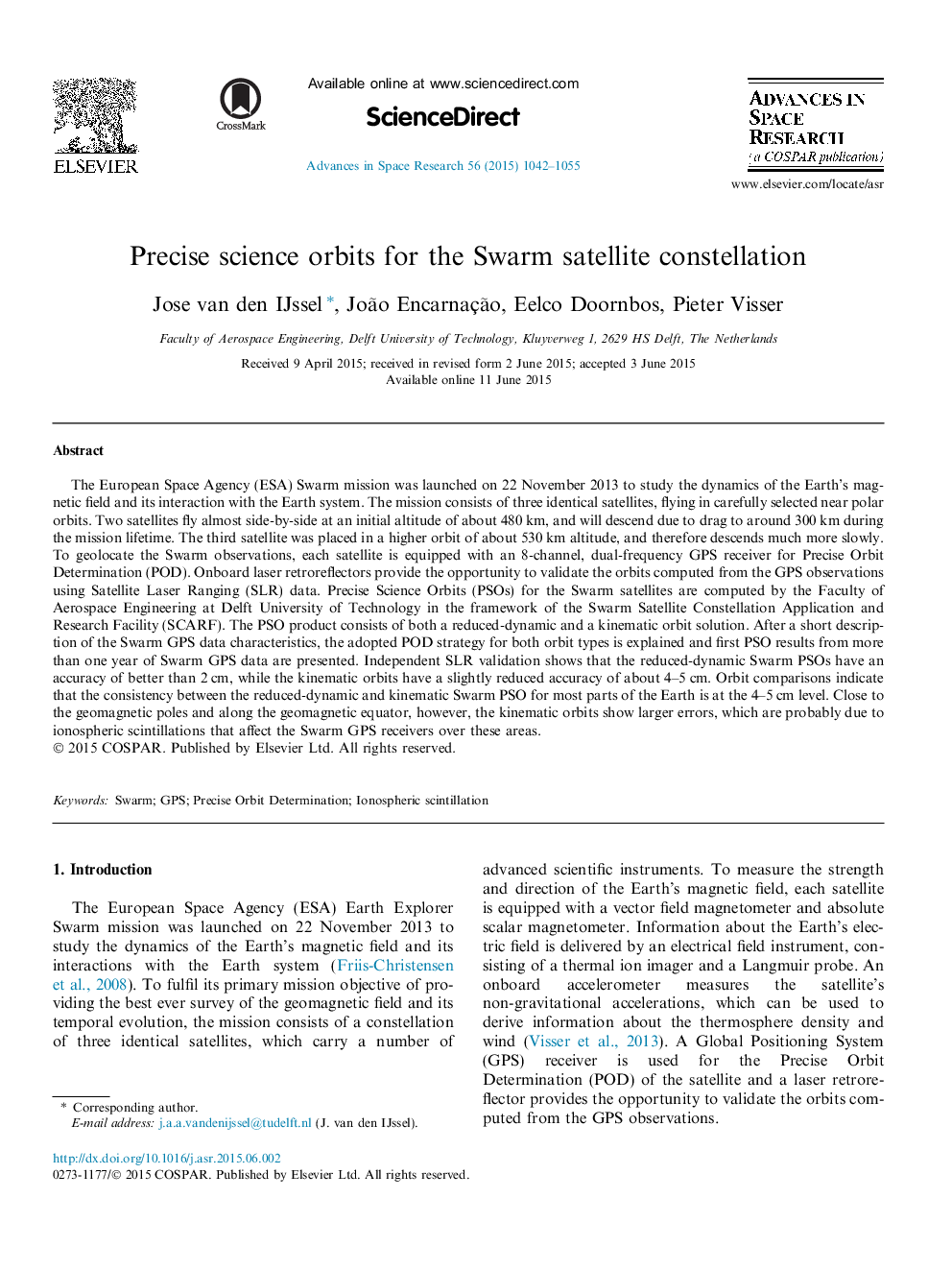| کد مقاله | کد نشریه | سال انتشار | مقاله انگلیسی | نسخه تمام متن |
|---|---|---|---|---|
| 10694200 | 1020015 | 2015 | 14 صفحه PDF | دانلود رایگان |
عنوان انگلیسی مقاله ISI
Precise science orbits for the Swarm satellite constellation
ترجمه فارسی عنوان
مدار دقیق علمی برای ستارگان ماهواره سنگی
دانلود مقاله + سفارش ترجمه
دانلود مقاله ISI انگلیسی
رایگان برای ایرانیان
کلمات کلیدی
ازدحام، جیپیاس، تعیین دقیق مدار، جرقه یونوسفر،
موضوعات مرتبط
مهندسی و علوم پایه
علوم زمین و سیارات
علوم فضا و نجوم
چکیده انگلیسی
The European Space Agency (ESA) Swarm mission was launched on 22 November 2013 to study the dynamics of the Earth's magnetic field and its interaction with the Earth system. The mission consists of three identical satellites, flying in carefully selected near polar orbits. Two satellites fly almost side-by-side at an initial altitude of about 480Â km, and will descend due to drag to around 300Â km during the mission lifetime. The third satellite was placed in a higher orbit of about 530Â km altitude, and therefore descends much more slowly. To geolocate the Swarm observations, each satellite is equipped with an 8-channel, dual-frequency GPS receiver for Precise Orbit Determination (POD). Onboard laser retroreflectors provide the opportunity to validate the orbits computed from the GPS observations using Satellite Laser Ranging (SLR) data. Precise Science Orbits (PSOs) for the Swarm satellites are computed by the Faculty of Aerospace Engineering at Delft University of Technology in the framework of the Swarm Satellite Constellation Application and Research Facility (SCARF). The PSO product consists of both a reduced-dynamic and a kinematic orbit solution. After a short description of the Swarm GPS data characteristics, the adopted POD strategy for both orbit types is explained and first PSO results from more than one year of Swarm GPS data are presented. Independent SLR validation shows that the reduced-dynamic Swarm PSOs have an accuracy of better than 2Â cm, while the kinematic orbits have a slightly reduced accuracy of about 4-5Â cm. Orbit comparisons indicate that the consistency between the reduced-dynamic and kinematic Swarm PSO for most parts of the Earth is at the 4-5Â cm level. Close to the geomagnetic poles and along the geomagnetic equator, however, the kinematic orbits show larger errors, which are probably due to ionospheric scintillations that affect the Swarm GPS receivers over these areas.
ناشر
Database: Elsevier - ScienceDirect (ساینس دایرکت)
Journal: Advances in Space Research - Volume 56, Issue 6, 15 September 2015, Pages 1042-1055
Journal: Advances in Space Research - Volume 56, Issue 6, 15 September 2015, Pages 1042-1055
نویسندگان
Jose van den IJssel, João Encarnação, Eelco Doornbos, Pieter Visser,
